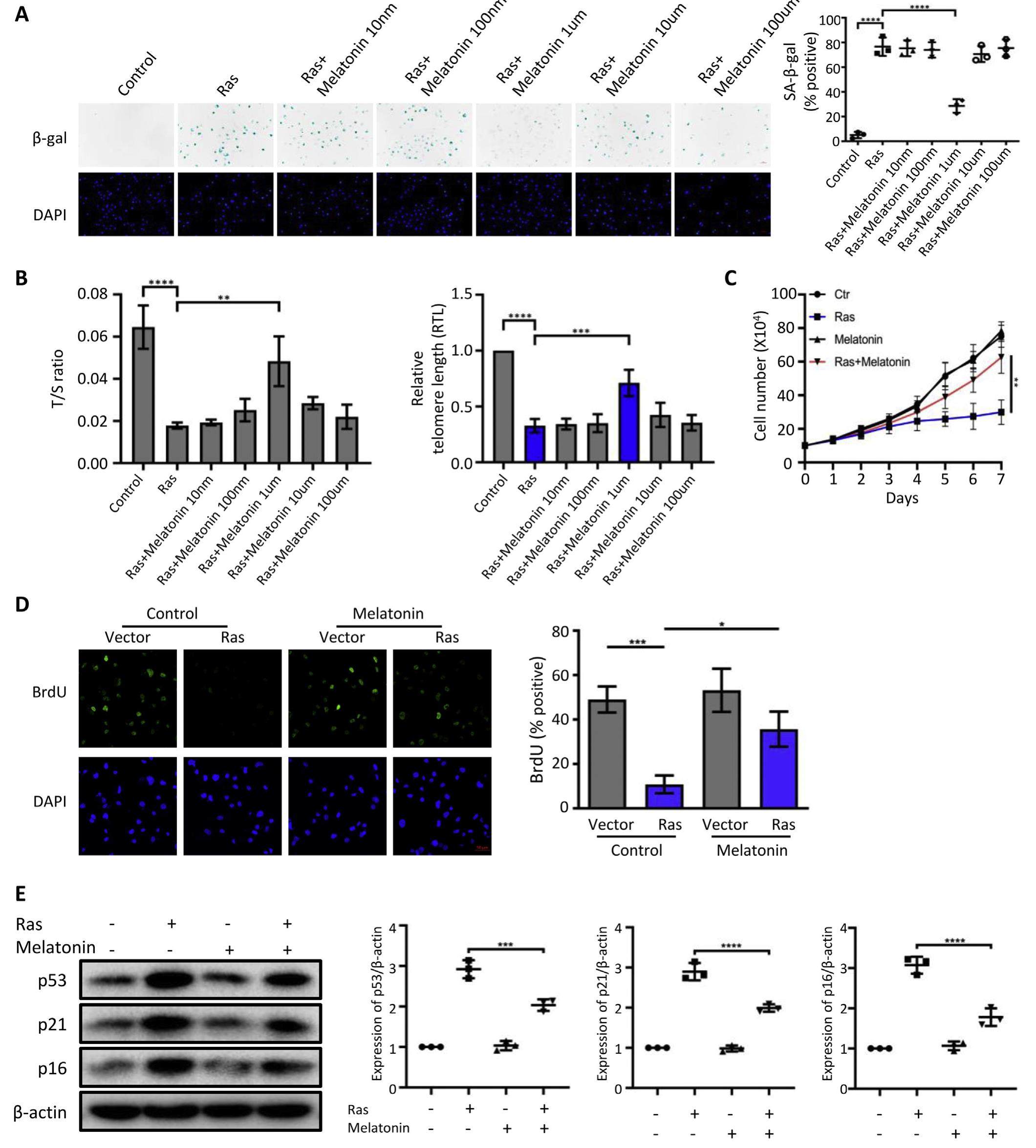
Melatonin antagonizes ovarian aging via YTHDF2-MAPK-NF-κB pathway


Cellular senescence is closely associated with age-related diseases. Ovarian aging, a special type of organ senescence, is the pathophysiological foundation of the diseases of the reproductive system. It is characterized by the loss of integrity of the surface epithelium and a gradual decrease in the number of human ovarian surface epithelial cells (HOSEpiCs). To contribute to the research on delaying ovarian aging, we aimed to investigate the novel epigenetic mechanism of melatonin in protecting HOSEpiCs. We discovered that melatonin has antagonistic effects against the oncogene-induced senescence (OIS) of HOSEpiCs. Mechanistically, the oncogene Ras decreased the expression of YTHDF2, which is the reader of RNA-m6A, by stimulating the generation of reactive oxygen species (ROS). Moreover, we found that the suppression of YTHDF2 increased the expression of MAP2K4 and MAP4K4 by enhancing the stability of the transcription of their mRNAs, thereby upregulating the expression of the senescence-associated secretory phenotype (SASP) through the activation of the MAP2K4 and MAP4K4-dependent nuclear factor-κB (NF-κB) signaling pathways. We further determined that melatonin has antagonistic effects against the OIS of HOSEpiCs by inhibiting the ROS-YTHDF2-MAPK-NF-κB pathway. These findings provide key insights into the potential avenues for preventing and treating ovarian aging.
